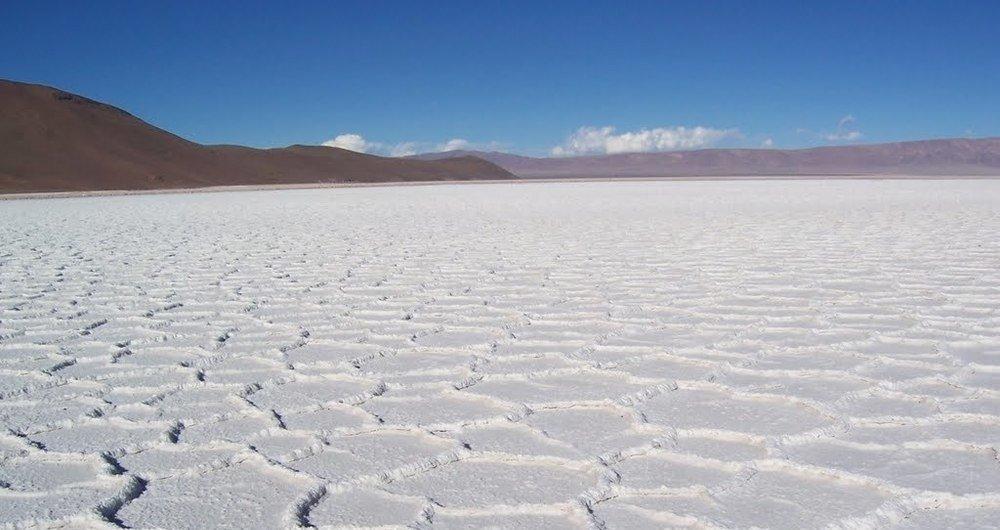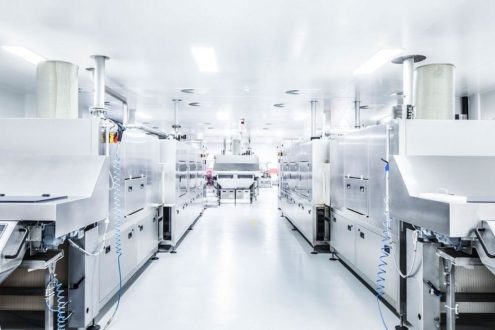
Argentina Lithium Receives First Drill Results Salar De Rincon
Unfortunately negative stock market sentiment, caused by worries about the Federal Reserve interest rate hike policies (very recently acting with a forecasted 0.75% hike, promising more to come) and related recession fears don’t have the most positive effect on junior mining stocks at the moment, lithium juniors included. Notwithstanding, the paradigm shift to renewable energy is in full swing and can’t be stopped anymore, causing increasing demand for everything battery related including metals like lithium and nickel. Argentina Lithium & Energy Corp. (TSX-V: LIT, FSE: OAY1, OTC: PNXLF) doesn’t seem to wait until the tide turns, and after raising almost C$6M in an oversubscribed financing at the beginning of this year, it is proceeding with drilling their new flagship Rincon West Project, and expanding their claim holdings at this project. Rincon is a very interesting area, as not too long ago Rincon Mining, a private company constructing an adjacent brine project at the same salar, and owned by Sentient Equity Partners, was acquired for US$825M by Rio Tinto.
All pictures are company material, unless stated otherwise.
All currencies are in US Dollars, unless stated otherwise.
On July 21, 2022, Argentina Lithium announced that it won the public tender to purchase the Rinconcita II mining concession, located on the Salar de Rincon in the Salta Province, Argentina. With this the company has added another 460.5ha of salt flat properties, adjacent to not just the already owned 2,470ha Rincon West project, but also next to the aforementioned Rincon project acquired by Rio Tinto. The new claims can be seen on the following map (see attachement).
No exploration work has been done at Rinconcita II in the past. Argentina Lithium also mentioned the acquisition of the 20.5ha Demasia Villanoveno II concession, through applications presented at the Salta mining authority, representing part of the original Rincon West claim package.
As part of the Rinconcita II acquisition, Argentina Lithium will make an initial payment of US$2.5M when signing the agreement. It also grants a 3% NSR to the vendor when it advances to the production stage, and the company needed to present a proposed exploration program for approval.
Argentina Lithium already owned 15,857ha of properties on the west side of the Pocitos Salar, and acquired 10,364ha of new properties at Pocitos in January of this year, for a total cash consideration of US$2.6M and C$850k in shares. This will cost the company US$285k in mandatory payments for the first year. As a reminder, Rincon West and Pocitos were acquired in October 2021. The terms for the two main properties, with a combined footprint of 18,227 hectares, weren’t cheap.
The company issued 750,000 shares to the local vendor on signing plus C$500,000 worth of shares over a 12-month period; and cash payments totaling US$4,200,000 over 36 months, but limited to only US$1,050,000 in the first 18 months, US$800,000 of which are firm commitments over the first year. Therefore, total commitments for the first year for Rincon West and Pocitos increase to US1.085M. As CEO Nikolaos Cacos expected to have the new properties at Pocitos permitted around Q2, 2022, I wondered what the status on permitting was here, and if/what kind of exploration programs including drilling have been designed. CEO Cacos answered “With our recent acquisitions, we have reassigned project priorities. Our primary focus is to define high-grade resources adjacent to major players on the proven salars of Rincon and Antofalla. Pocitos is a huge, underexplored lithium salar. We like the setting and the huge up-side potential, but Pocitos is an early stage exploration project. It will take its place lower in our project pipeline.”
Since the nearby project of Argosy Minerals in eastern Rincon has an average grade of 321mg/L Li, and the grade of the part of the Salar de Rincon for neighbouring and recently sold Rincon Mining is 397Mg/L Li, I expected the assay grades for the new drill program at Rincon West (which commenced on May 31, 2022 and lasts 5 months) to be over 300mg/L Li. As the company announced the results of the first drill hole on July 13, this was a good opportunity to verify expectations. It turned out that a 70m thick drilled interval returned lithium grades varying from 225 to 380Mg/L Li, so on average the 300Mg/L Li threshold seems to be met here. It was good to see Argentina Lithium assaying economic lithium grades right away from the start, as indicated aquifers don’t automatically mean sufficient lithium mineralization. The VP Exploration Miles Rideout was also pleased with the results:
"The first hole at Rincon West has revealed a permeable 70 metre interval with moderate to high-grade lithium values. This validates our belief that the concentrated lithium brines mapped in the adjacent resources does extend beneath our property. We are continuing our exploration drilling to delineate this mineralization with the aim of defining a mineral resource."
A second drill hole is in progress, and up to seven others are planned with at least four more being drilled this summer, all of them can be seen on the following map (see attachement).
The yellow zones on the map above indicate conductive aquifers, defined by the TEM surveys completed in March-April of this year. These conductive aquifers are targets for drilling as they could contain concentrated lithium brines. Cross-sections based on the TEM survey can be seen here, with the purple zones indicating conductive zones (potential brines) (see attachement).
As can be seen, the conductive zone extends for about 12km representing significant potential brine volume.
All diamond drill holes will be drilled vertically, and the first drill hole was stopped in basement rocks at 300m depth below surface. Looking for brines you ideally hope for aquifers stretching 200-300m deep, but since the strike-length appears to be 12km, sheer size could provide sufficient volume here. I wondered what the average thickness is of the adjacent Salar de Rincon project, now owned by Rio Tinto. According to CEO Cacos “More than 90% of the historic drilling by neighbouring companies has tested to 100m depth or less. High-grade resource at shallow levels is an attractive feature of this basin, but we believe continued exploration will also produce positive results from deeper levels.”
As can be seen, the average grade of the first drill hole is somewhat lower on all elements tested, compared to the Salar de Rincon itself. I asked CEO Cacos if this is what he expected, what he wanted and what he is looking for in the upcoming drill holes. He answered ”Our first hole produced extremely positive results, demonstrating we have brines that are approximately comparable to the published resources on the salar. This was our expectation. Ongoing drilling is intended to define the property’s potential and to provide the data for our resource calculation. I think the discovery hole was a great beginning.”
Located to the south of Salar de Rincon, the Pocitos Project was acquired together with the Rincon West property. Exploration plans for Pocitos involve 121 kilometers of TEM soundings in Q1, 2023, and as such is a lower priority exploration play for Argentina Lithium. According to CEO Cacos, these exploration plans have been adjusted following recent property acquisitions.
A new high priority for Argentina Lithium is its Antofalla North Project. The company expanded their Antofalla North project by acquiring 5,411ha in April, 2022 for a total of 14,987ha. The project is located approximately 25 km west of Argentina’s largest lithium producing operation at Salar de Hombre Muerto. The Salar de Antofalla is over 130 km long and varies between 5 km and 10 km in width, with reported basin depths exceeding 500 m. The terms of the option agreement to own 100% include cash payments totaling US$2.8M over 4 years, C$7M in exploration expenditure commitments, and the vendor retains a 2% NSR, repurchasable for US$3M.
The Antofalla acquisitions are particularly notable since Albemarle, the world’s largest producer of lithium for EV battery production, has focused their salar property acquisitions in this basin and has a published high-grade resource. Albemarle’s project begins approximately 500m south of Argentina Lithium’s holdings. The current exploration plan for the Antofalla North project involves 110 km of TEM soundings, followed by an estimated 6 diamond drill holes. Regarding timing, CEO Cacos stated “Our drill permitting process is well advanced for Antofalla North, which extends between two provinces, requiring two submissions. We expect to complete our geophysical surveys in the fourth quarter, and to begin drilling early in 2023.”
When looking at it from a distance, since the company has a considerable quantity of projects in its portfolio now, and a corresponding, significant financial obligations, I wondered why the company acquired and optioned so many projects, as it is draining the treasury a few million dollars annually just on property acquisitions and obligations, which is costly shareholders money that can’t go in the ground, and dilutes the share structure when raising it. There is only so much you can explore and drill each year. Wouldn’t it be better to focus more on one or two best projects, and divest the others asap? The company appears to have burned through almost C$2M since December 2021, without doing much drilling and just TEM surveys, as it is contemplating a new C$2.5M @ 20c financing at the moment. CEO Cacos answered my questions with the following extensive explanation: “This was a strategic decision, also please note we still have C$4M in the treasury, but have the opportunity to raise more. We saw the opportunities to acquire the large blocks at Rincon and Antofalla, strategically located beside major resources. We recognized that these opportunities are unlikely to be repeated. Our team has the depth of experience to manage this ambitious portfolio effectively. A point that might not be obvious is that all our properties already have all-weather roads and nearby towns and infrastructure. In each case, we can move quickly to advanced geophysical imaging of brine deposits and drill testing, which will reduce our exploration time and cost. This benefit doesn’t come cheaply, but pays dividends through the entire life of the projects. In short, we prefer to invest in large, high prospectivity projects, rather than conceding property quality to other concerns.”
I like the concept of going for large quality claim blocks, as it increases chances of success. The flip side is you have to finance holding costs and exploration. If funding this is no issue, it is indeed the best strategy to follow in my view. So far so good. Investors seem to wait for results, and a turning of the markets (see attachement).
As usually happens in a bear market, lots of stocks become as cheap or even cheaper compared to the period right before such a bear market, although the asset value could have increased nonetheless. In this case Argentina Lithium acquired more claims at the various projects, conducted several surveys and started drilling at Rincon West, with other drilling coming up, and lithium product prices went ballistic again a few months ago, more than doubling since March. Therefore I’m not entirely convinced that the current low share price really displays the intrinsic value development of Argentina Lithium at the moment.
Conclusion
Argentina Lithium maintains a buying spree, although it already has an impressive land package, spread over four different lithium salar projects in Argentina, part of the Lithium Triangle. This is done because management places highest priority on property quality and scale. At the same time, the company is executing its exploration plan of geophysical imaging followed by drilling of conductive targets. Initial drill results at Rincon West confirmed grades almost similar to the adjacent Rincon Project, which was recently acquired by Rio Tinto for US$825M. At least four more holes are being drilled this summer, and I’m curious if the upcoming results will show a brine field of economic proportions and grade. With a giant like Rio Tinto owning the adjacent project, there already seems to be a natural suitor with deep pockets at their doorstep.
I hope you will find this article interesting and useful, and will have further interest in my upcoming articles on mining. To never miss a thing, please subscribe to my free newsletter on www.criticalinvestor.eu in order to get an email notice of my new articles soon after they are published.
Disclaimer:
The author is not a registered investment advisor, and has a long position in this stock. Argentina Lithium and Energy is a sponsoring company. All facts are to be checked by the reader. For more information go to www.argentinalithium.com and read the company’s profile and official documents on www.sedar.com, also for important risk disclosures. This article is provided for information purposes only, and is not intended to be investment advice of any kind, and all readers are encouraged to do their own due diligence, and talk to their own licensed investment advisors prior to making any investment decisions.
Swiss Resource Capital AG
Poststrasse 1
CH9100 Herisau
Telefon: +41 (71) 354-8501
Telefax: +41 (71) 560-4271
http://www.resource-capital.ch
CEO
Telefon: +41 (71) 3548501
E-Mail: js@resource-capital.ch
![]()




